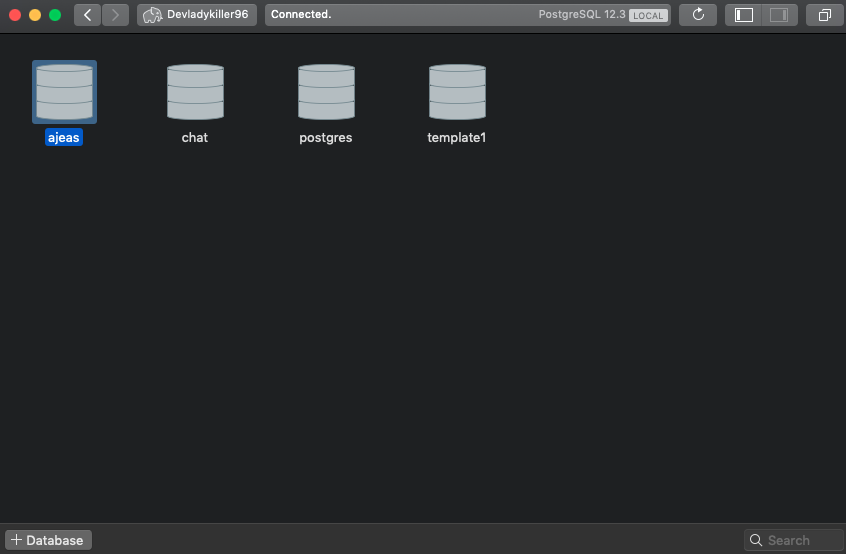
- #Postico create new database how to#
- #Postico create new database install#
- #Postico create new database upgrade#
- #Postico create new database code#
- #Postico create new database trial#
subscription="" # add subscription hereĪz account set -s $subscription #. If you don't have an Azure subscription, create an Azure free account before you begin. Use the following script to sign in using a different subscription, replacing with your Azure Subscription ID. Sign in to AzureĬloud Shell is automatically authenticated under the initial account signed-in with. Select Copy to copy the blocks of code, paste it into the Cloud Shell, and press Enter to run it. Subsequent sessions will use Azure CLI in a Bash environment. When Cloud Shell opens, verify that Bash is selected for your environment. You can also launch Cloud Shell in a separate browser tab by going to.
#Postico create new database code#
To open the Cloud Shell, select Try it from the upper right corner of a code block.

It has common Azure tools preinstalled and configured to use with your account. The Azure Cloud Shell is a free interactive shell that you can use to run the steps in this article.
#Postico create new database upgrade#
To upgrade to the latest version, run az upgrade. Run az version to find the version and dependent libraries that are installed. For more information about extensions, see Use extensions with the Azure CLI.
#Postico create new database install#
When you're prompted, install Azure CLI extensions on first use. For additional sign-in options, see Sign in with the Azure CLI. To finish the authentication process, follow the steps displayed in your terminal. If you're using a local installation, sign in to the Azure CLI by using the az login command.
#Postico create new database how to#
For more information, see How to run the Azure CLI in a Docker container. If you are running on Windows or macOS, consider running Azure CLI in a Docker container. If you prefer to run CLI reference commands locally, install the Azure CLI. For more information, see Azure Cloud Shell Quickstart - Bash. Use the Bash environment in Azure Cloud Shell. Prepare your environment for the Azure CLI Make sure to record the generated resource group and server names, so you can manage these resources later. The Azure CLI code blocks in this section create a resource group, server, single database, and server-level IP firewall rule for access to the server. On the Review + create page, after reviewing, select Create. Select Review + create at the bottom of the page: You can also configure database collation and a maintenance window. This creates an AdventureWorksLT sample database so there's some tables and data to query and experiment with, as opposed to an empty blank database. On the Additional settings tab, in the Data source section, for Use existing data, select Sample.

Select Next: Additional settings at the bottom of the page.
#Postico create new database trial#
On the Security page, you can choose to start a free trial of Microsoft Defender for SQL, as well as configure Ledger, Managed identities and Transparent data encryption (TDE) if you desire.

Select Next: Security at the bottom of the page. Under Connection policy, choose the Default connection policy, and leave the Minimum TLS version at the default of TLS 1.2. Leave Allow Azure services and resources to access this server set to No. On the Networking tab, for Connectivity method, select Public endpoint.įor Firewall rules, set Add current client IP address to Yes. Select Next: Networking at the bottom of the page. To learn more, see backup storage redundancy. Under Backup storage redundancy, choose a redundancy option for the storage account where your backups will be saved. This quickstart uses a serverless database, so leave Service tier set to General Purpose (Scalable compute and storage options) and set Compute tier to Serverless. Under Compute + storage, select Configure database. Leave Want to use SQL elastic pool set to No.


 0 kommentar(er)
0 kommentar(er)
